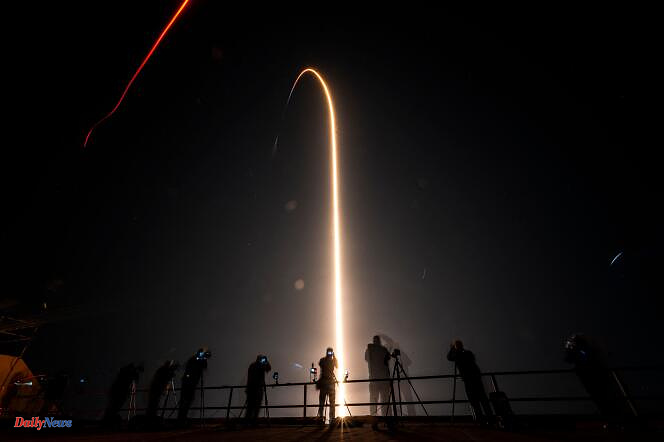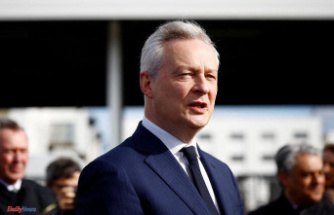Three American astronauts and one Russian took off on Sunday evening, March 3, from Florida to the International Space Station (ISS), where they will stay for approximately six months. Initially scheduled for Saturday, the launch was postponed by twenty-four hours due to unfavorable weather.
SpaceX's Falcon-9 rocket lifted off at 10:53 p.m. local time (4:53 a.m. Paris Monday) from the Kennedy Space Center, lighting up the night sky with a long, brilliant plume of orange flame. Minutes after firing, the launcher was flying over the Atlantic Ocean at a speed of some 9,700 km/h, NASA commentators described.
The ship, which has three men and one woman on board, took about nine minutes to enter orbit. It must dock with the ISS to relieve four crew members from the space laboratory. The capsule named “Endeavour” and placed at the top of the rocket has already been used for four previous manned missions by Elon Musk’s company.
The four passengers this time are members of Crew-8, the eighth regular rotation mission of the American crew in the ISS carried out by SpaceX for NASA. The American Michael Barratt is the only Crew-8 astronaut to have already visited the flying laboratory. However, this is the first space trip for the two other Americans - Matthew Dominick and Jeanette Epps - as well as the Russian Alexandre Grebionkine.
Cooperation between Washington and Moscow
NASA and the Russian space agency Roscosmos, which together operate the ISS, have set up an astronaut exchange program, each taking turns transporting a crew member from the other country. This program was maintained despite the war in Ukraine, and the ISS is now one of the very few subjects of cooperation between Washington and Moscow. The members of Crew-8 will join the seven people already present on the ISS.
After a handover period of a few days with the four members of Crew-7 – an American, a Dane, a Japanese and a Russian – they will return to Earth aboard their own Dragon capsule. More than 200 scientific experiments must be carried out during the six months Crew-8 spends in the flying laboratory, which has been permanently inhabited for twenty-three years.
While the first years of the station's life were devoted to its construction, astronauts can now devote more time to science. “Many of the things we dreamed of a long time ago are coming to fruition today,” NASA boss Bill Nelson said this week, citing, for example, stem cell research.
But the station's age also has a downside: NASA and Roscomos are monitoring a "leak" at the end of a Russian module, which has recently increased its flow, Joel Montalbano, head of the station, said this week. of the ISS program at NASA. A hatch is currently permanently closed to isolate the leak from the rest of the station.












